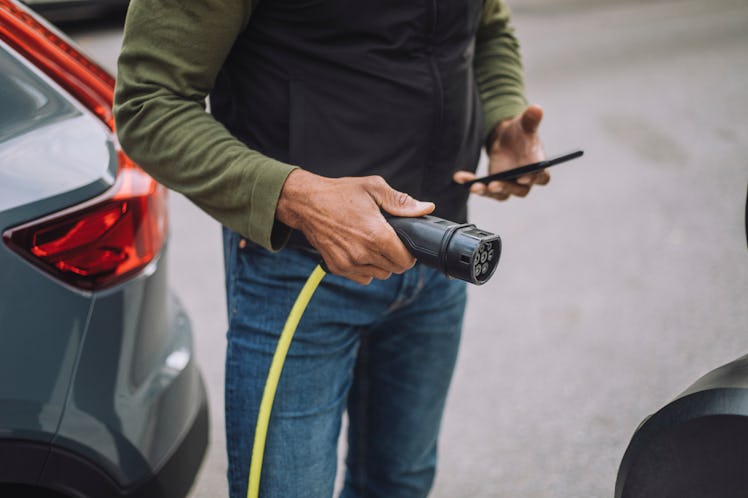Charging Stations Have A Major Flaw That Really Annoys EV Owners
Customer satisfaction with public charging stations is at its lowest point in three years.

There’s been a lot of new buzz around electric vehicles (EVs), as more models fall within reach of consumers. In spite of lower prices, the availability of tax credits, and expanding infrastructure, a new study finds that EV drives are unhappy. What’s to blame? Public charging stations.
Among early users of EVs, one of the chief complaints was the lack of public charging stations and the “range anxiety” that scarcity engendered — the fear of running out of battery before finding a public charging station. Twenty years ago, there were only a few hundred chargers nationwide, while today, there are an estimated 55,000, with more promised over the next few years. While that’s a massive improvement, the report from J.D. Power shows EV users are less than satisfied.
Specifically, the J.D. Power 2023 U.S. Electric Vehicle Experience (EVX) Public Charging Study report found EV customers are down on the public Level 2 charging stations that are available. Level 2 charging stations are commonly offered in public charging hubs and can charge an EV battery from empty to 80% in four to 10 hours, or a hybrid EV in one to two hours, per the U.S. Dept. of Transportation.
The study found that customer satisfaction with public Level 2 charging stations was down another 16 points, its lowest point since the study began, in 2021. Customer happiness with “fast chargers” was down even more, 20 points since the last study. The report also noted that 24% of drivers find the public charging experience unreliable.
“Through the public EV charging feedback we have been tracking over the past three years, one thing that has been abundantly clear to us is that public charger availability is not meeting consumer demand,” Brent Gruber, executive director of the EV practice at J.D. Power, tells Fatherly. “It’s not at the level it needs to be to alleviate availability concerns among EV considerers and non-considerers, and it’s also not at the level necessary to meet the demand of current EV owners.”
One concern among EV drivers with regard to EV charging stations is that the ones available require drivers to wait a long time while their vehicle charges. As the infrastructure of EV charging stations grows, focusing on the Level 2 chargers and not the significantly faster DC chargers saves them money but drives down customer satisfaction.
“Level 2 chargers are much less expensive and conducive to rapid installation in convenient and more populated locations,” Gruber adds. “However, although DC fast chargers are much more expensive than Level 2 chargers and take much more time to get installed, they are necessary to support charging during road trips where EV owners may not have the luxury of time to sit and wait long while charging.”
Gruber adds, “A critical step is for infrastructure stakeholders to identify which solution is best suited for the intended use case and quickly execute that plan before EV adoption accelerates.”
The U.S. has been actively bolstering its EV infrastructure as part of President Joe Biden's commitment to advancing green energy initiatives. Last year, approximately 6,300 rapid-charging stations were installed across the nation, with Tesla Superchargers accounting for approximately three-quarters of this total, as reported by the International Energy Agency. But Gruber says that’s not enough.
“The federal government has recognized [the need for EV chargers] and allocated large investments through the Bi-partisan Infrastructure Law and the Inflation Reduction Act to improve the availability of public charging in an equitable manner,” he notes. “This, however, will take some time before we see measurable progress with installations.”
Another major issue that needs to be addressed to improve customer satisfaction with EVs is the “industry-wide issue with charging station reliability” — Gruber says that the “considerable differences in technology” complicate things too.
For example, Telsa’s Supercharger network has 1,847 stations in the U.S., housing 20,040 Tesla Supercharger ports, according to data collected by the U.S. Department of Energy. Approximately 25% of all DC Fast charging stations — the fastest chargers — are Supercharger ports, but for non-Telsa vehicles to use the faster chargers, they need to purchase an adapter, which likely is, at least in part, contributing to the lowering satisfaction shown in the J.D. report.
However, General Motors and Ford have agreed to integrate Tesla charging technology into their vehicles starting in 2025, which could help boost satisfaction.